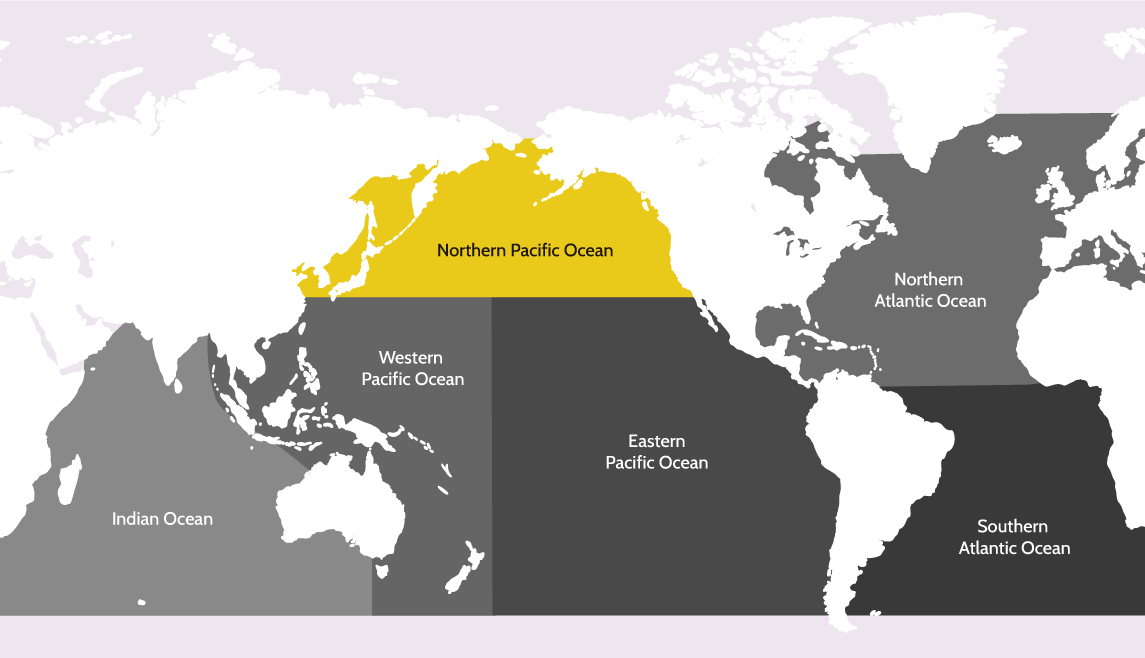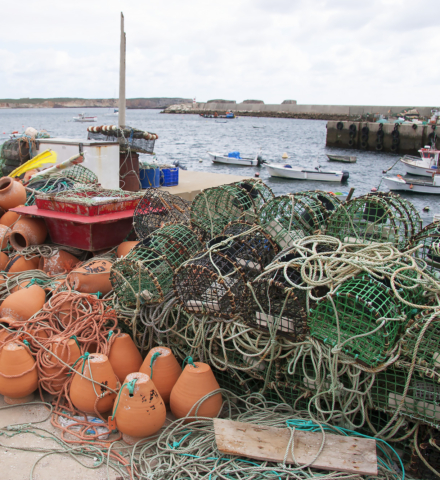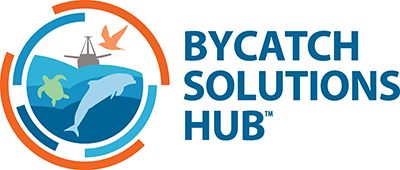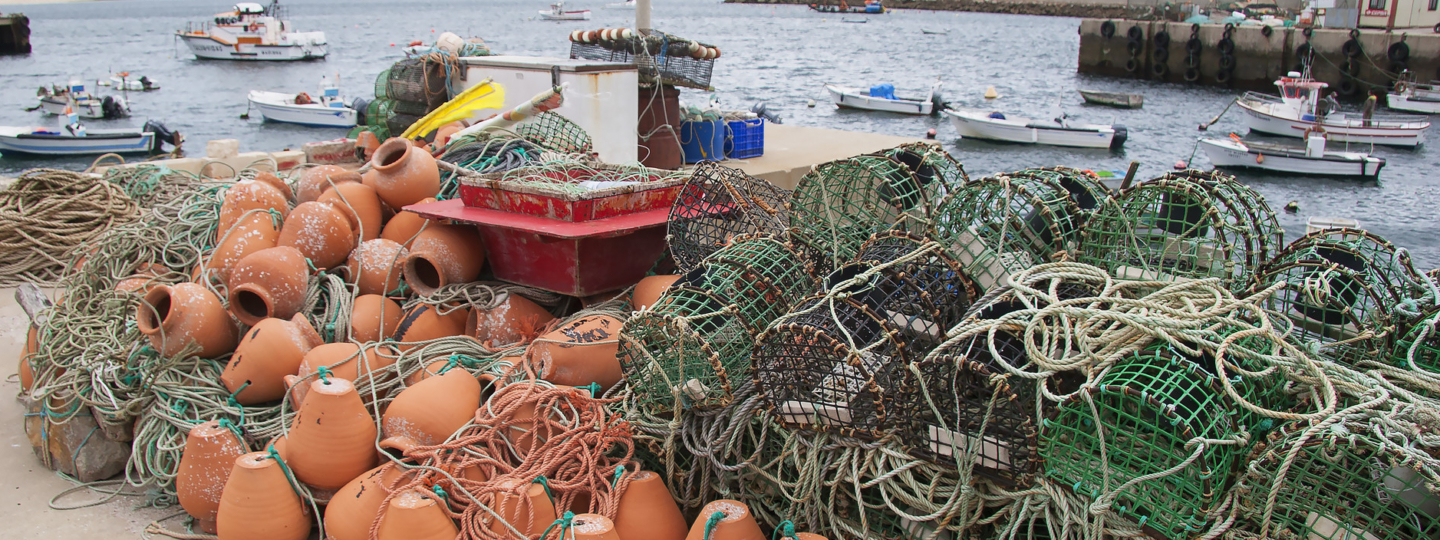Pots/Traps
Northern Pacific Ocean
Pots and traps are set on the seafloor and attached to the surface with a buoy line. For many fisheries, a string of multiple traps are deployed in a trawl, which has a buoy line on each end. Pot and trap fisheries typically target crustaceans or groundfish.


Target Species
Dungeness Crab
Groundfish
King Crab
Snow Crab
Bycatch Species
Marine Mammals
Sea Turtles
Solutions
View allFunding Opportunities
View allDescription
In Alaskan waters, the loss of crab pots can effect the marine ecosystem and the communities who rely on these fisheries. Studies show 31,000 pots per year are lost in the Bering Sea. These pots last up to 15 years in the environment.
Anecdotal reports from the Bering Sea Crabbers indicate that pot gear loss rates in Alaskan waters are in part due to gear conflict, which occurs when trawler vessel gear inadvertently interacts with crab pots fisheries. This causes potential damage to both the pots and the trawler vessel, often resulting in the parting of lines between the pots and surface buoys, meaning the pots are lost to the ocean floor where they continue to ghost fish.
Crab fishers in the Bering Sea have been eager to resolve this problem, but have not found a solution. A means of resolving this issue is to utilize Smart Buoys to mark pot gear both on the owner’s chart plotter, but also on any trawl vessel within a certain range of that gear. This project will fund 120 Smart Buoy to crab harvesters in the snow crab and baridai crab fisheries in the Bering Sea to mark their pots. Blue Ocean Gear will be responsible for setting each crab harvester up with buoys and training. Blue Ocean Gear will work with the Bering Sea Crabbers to communicate with the trawl vessels. Not only can this effort reduce the cost to harvesters who lose many pots each season to gear conflict, but it can also help protect the ocean ecosystem with high levels of biodiversity from the preventable causes of ghost fishing. In addition, it allows for seamless cooperation between fisheries, enabling them to operate in the same regions in a synchronous manner.
Beneficiary: Blue Ocean Gear
- Funding for 120 Smart Buoys and training for harvesters $195,500 USD
Description
Research suggests that over 300,000 whales and dolphins die annually due to entanglement in fishing gear, with additional unknown numbers also entangled in marine debris. This can have devastating, long-term conservation impacts on those populations that are already threatened, in some cases critically. In response to these growing concerns, the International Whaling Commission (IWC) launched a Global Whale Entanglement Response Network (GWERN) in 2011. The immediate aim of the program was to build safe and effective entanglement response capability around the world. The long-term goal is to prevent entanglements incidence globally.
The program is a partnership with the Center for Coastal Studies (CCS) in Provincetown, Massachusetts, US considered one of the global leaders in entanglement response. It is led by Technical Advisors who work for both CCS and the IWC, supported by an Expert Panel drawn from countries with long-standing and well-tested approaches to entanglement response.
With assistance from this global expert group, a Best Practice Guidelines and a two-day entanglement response training package has been development and is in need of further support. The training workshop includes classroom study, with information on data collection, relevant regulations, and regional cetacean identification, followed by on the water, hands-on disentanglement exercises. Since 2012, these training workshops have been delivered across five continents, reaching over 1,700 participants from more than 43 countries.
Funding to support this program includes equipment costs for disentanglement kits and trainer sponsorship consisting of flights, subsistence and a $205/day trainer fee. Additionally, a smaller funding package to support disengagement kit supplies alone is available.
Beneficiary: International Whaling Commission in partnership with Center for Coastal Studies
- Funding to support equipment costs for disentanglement kits and trainer sponsorship $18,944 USD
Description
The CanFISH Gear Lending program is a fisheries assistance program that provides ropeless systems free of charge to fishers in New Brunswick, Prince Edward Island, and Nova Scotia, Canada, during temporary closures designed to protect North Atlantic Right Whales. Through this service, CanFISH is protecting the Canadian crab fishing industry and the snow crab harvester’s way of life, while promoting safe fishing methods for the critically endangered North Atlantic Right Whale (NARW).
This funding opportunity will provide essential assistance to the CanFISH program by supporting operational costs, specifically for monitoring gear sets, training, servicing and transportation of gear, storage and overhead costs so more ropeless systems can get to fishermen in the 2024 snow crab season.
Beneficiary: Canadian Wildlife Federation
- Program Operational Support $60,000

